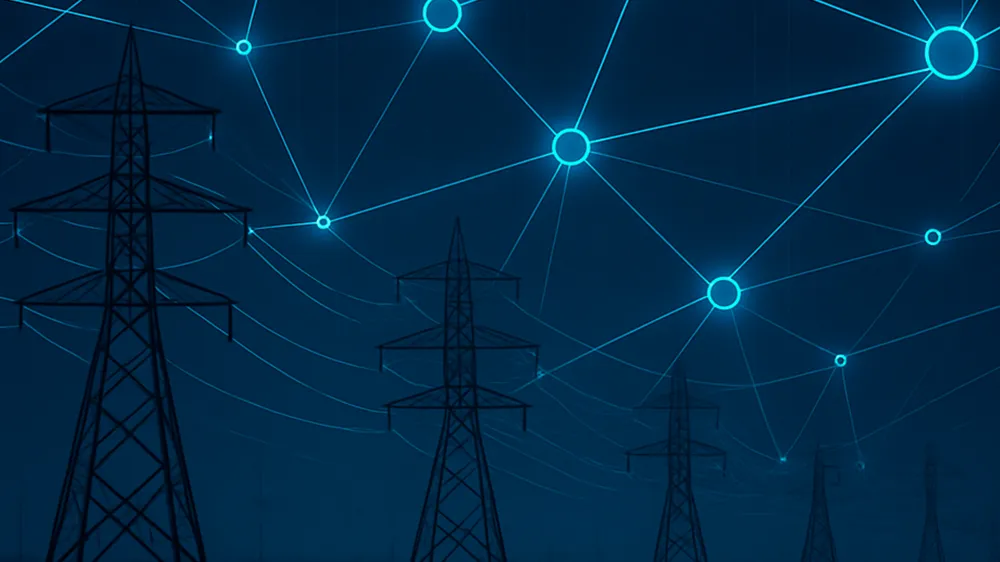
Calculate what one control room event really costs | Try our free ROI calculator
Discover what resilience means in a smart grid, how it differs from reliability, and the role of advanced technologies like DERs, microgrids, and resilience software in ensuring grid stability during extreme events.
September 30, 2025


As electricity becomes more embedded in every facet of modern life, from communication networks and transportation to hospitals and emergency services, ensuring a resilient power supply is more critical than ever. This urgency has brought new focus to a concept known as grid resilience.
But what is resilience in a smart grid context? How does it differ from traditional reliability measures? And what role does resilience software play in securing the grid against today’s complex threats?
This article explores the evolving meaning of resilience in electric grid operations and how smart grid technologies are transforming our ability to manage and recover from disruptions.
Grid resilience refers to the power system’s ability to anticipate, withstand, respond to, and recover from a wide range of disruptions. These could include severe weather events like hurricanes and wildfires, human-caused incidents such as cyberattacks or vandalism, and technical problems like equipment failure.
Unlike reliability, which focuses on minimizing the frequency and duration of power interruptions under normal conditions, resilience emphasizes performance during and after extreme or unexpected events. A resilient grid is one that can continue functioning or return to normal operation quickly, even in the face of catastrophic challenges.
The transition from traditional grids to smart grids marks a turning point in how resilience is approached. While older grid architectures were centralized and vulnerable to single points of failure, smart grids are decentralized, data-driven, and more adaptive.
Smart grids deploy sensors and advanced metering infrastructure across the grid, enabling real-time situational awareness. These systems detect faults, load imbalances, and abnormal patterns instantly, allowing for swift intervention before small issues escalate into large outages. Data analytics tools help forecast stress points and optimize response strategies.
One of the most impactful developments in resilience grid design is the rise of distributed energy resources (DERs). These include rooftop solar, wind farms, and local battery storage systems. Unlike centralized power plants, DERs allow for localized generation and storage, which can keep power flowing even when parts of the central grid go offline.
When combined with microgrids, self-sustaining power islands that can operate independently or alongside the main grid, DERs can provide communities and facilities with a buffer against large-scale failures.
Resilience in a smart grid also depends on automation. Advanced distribution management systems (ADMS) use algorithms and reclosers to reroute electricity automatically around faults. These self-healing networks restore service faster and reduce the area and duration of outages without the need for manual operator intervention.
With growing digital interconnectivity comes greater exposure to cyber threats. A comprehensive resilience strategy now includes robust cybersecurity protocols. This means implementing intrusion detection systems, secure authentication methods, and constant monitoring of data flows.
Resilience software that incorporates real-time threat intelligence, anomaly detection, and system segmentation is essential to defend critical control room systems from cyber incidents that could disrupt operations.
While both reliability and resilience are core to grid operations, they serve distinct purposes:
In practice, grid resilience builds upon reliability by preparing for the worst while continuing to perform under stress.
Climate volatility, increasing demand, and the proliferation of connected devices are putting new pressures on the grid. Power outages not only inconvenience consumers; they disrupt hospitals, emergency services, communications infrastructure, and economic activity.
Recent events, such as heat-induced blackouts, polar vortex failures, and wildfire-triggered shutoffs, have revealed the limits of a reliability-only approach. As energy systems grow more complex and interdependent, resilience must become a design principle rather than a reactive feature.
Investing in grid resilience ensures that power infrastructure can endure shocks, adapt in real time, and recover with minimal impact. For utilities, this results in improved service continuity, regulatory compliance, and stakeholder confidence. For communities, it provides safety, stability, and equitable access to energy, even in a crisis.
At the operational level, resilience is increasingly driven by intelligent software platforms that support real-time decision-making. In modern control rooms, resilience software enables:
To support these capabilities, control room interfaces must be purpose-built for situational clarity and operational speed. Effective video wall displays and large-format displays should integrate block diagram visualizations, geospatial awareness, and schematic overlays. This combination provides operators with immediate context and control during high-stakes events.
Resilience in a smart grid is not achieved through a single technology or investment. It is the outcome of layered defenses across physical, digital, organizational, and cultural systems, all working together to ensure continuity in a dynamic risk landscape.
As utilities plan for the future, resilience software, distributed energy, secure automation, and advanced visualization tools will become foundational. These technologies may not eliminate all threats, but they determine how well we respond, how quickly we recover, and how confidently we adapt.
In the face of rising uncertainty, grid resilience is more than a technical benchmark. It is a public imperative and a strategic advantage.
See if your control room is prepared to support AAR and DLR across visibility, data, and operations.
Check Readiness →